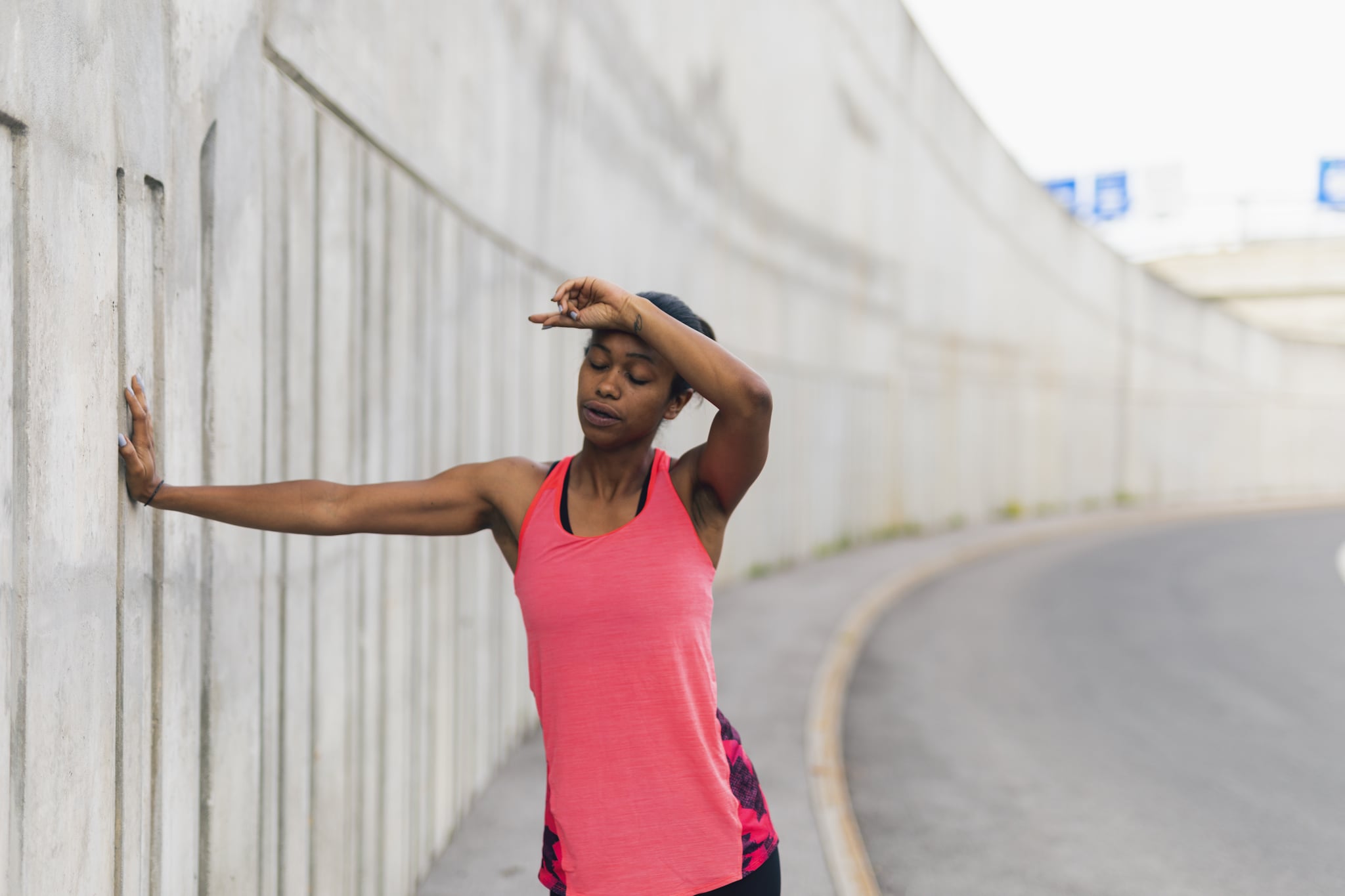

If you're wondering why you get headaches when you exercise, you're not alone. According to Elizabeth Barchi, MD, expert in sports medicine from NYU Langone Health, while exercise can prevent headaches and migraines, it can cause them as well. POPSUGAR spoke to her and two other experts about why headaches may happen during exercise, how to treat them, and when to see a doctor.
What Causes Exercise Headaches?
Cove medical adviser Sara Crystal, MD, neurologist, and headache specialist at the NY Headache Center, told POPSUGAR that sometimes it's just a matter of dehydration or tiredness, but exercise can actually trigger headaches as severe as migraines. For a refresher, migraines most often occur on one side of the head and are longer-lasting and more disabling than typical headaches. They may also be accompanied by symptoms like light and sound sensitivity, nausea, and/or vomiting.
Headaches can occur due to intense exertion and increased blood pressure. These are called primary headaches because the symptoms typically subside once the specific exercise ends, Noah Rosen, MD, director of Northwell Headache Center, explained. A secondary headache, in comparison, exacerbates an underlying condition. "An example of this could be a Chiari 1 malformation where, from birth, the brain dips into the spinal canal," he said. "This can then become painfully symptomatic with significant flexion and extension of the neck." Another example that's less severe? You could be feeling extra pain from a sinus infection, according to Jordan D. Metzl, MD, who wrote about secondary headaches for triathlete.com.
Primary Headaches Caused by Exercise
Check out a few instances of primary headaches caused by different types of exercise ahead. (Fun fact: Headaches associated with sex are also considered exercise-induced, Dr. Rosen said.)
Weightlifter's Headache
Dr. Barchi said that a weightlifter's headache can happen when you're dealing with heavy weights. "The theory behind why it happens is that it's triggered by the Valsalva maneuver," she explained, which is a common breathing technique weightlifters use when exerting themselves. "Holding your breath while you're pushing and bearing down," Dr. Barchi said.
Exertional Headache
An exertional headache is one normally caused by increased blood pressure due to intense bouts of exercise. Dr. Crystal explained, "Exertional headaches are typically described as pulsating, last less than 48 hours, and occur only during or after physical activity. With an exertional headache, pain typically occurs on both sides of the head, unlike migraine, which is commonly one-sided." Dr. Barchi said this type of headache could happen if, for instance, you're at close to your maximum heart rate during a Spin class for several minutes.
Endurance Headache
Endurance headaches are thought to be caused more by exercising in the bright light or extreme heat. They're also commonly related to dehydration.
How to Prevent an Exercise Headache and What to Do If You Have One
Dr. Crystal said that, before a workout, warming up is important as well as staying well-fueled and hydrated. "Always be sure to warm up for 15 to 20 minutes rather than jumping right into something strenuous," she said. "If you are starting a new workout routine, be sure to start slow and let your body get acclimated for a few weeks if you have experienced headache symptoms from exercise in the past."
If you develop a headache during a workout, check your hydration. If you're feeling hydrated and you're not out in the heat, then you should stop and rest, Dr. Barchi said, adding that the best break would be taking 10 minutes or so to stretch and cool off. If the headache is better, you can return to what you were doing. "I would say go back at 50 percent of the intensity, and then try to go from there," she advised. "But if the headache's not getting better, even with 10 minutes of stretching, then that's when I'd say call it a day."
If a migraine occurs while you work out, Dr. Crystal always suggests applying cold or heat - whichever provides better relief for you - and to rest in a dark, quiet room. "While I know it can be difficult, trying to get some sleep or rest during the migraine episode is very helpful. I also recommend my patients take a medication such as a triptan at the first sign of a migraine, and to also use an anti-nausea medication if needed."
A Note on Secondary Headaches
As we mentioned, headaches triggered by exercise can sometimes be a warning sign of serious underlying health problems, and these would be classified as secondary headaches. Dr. Crystal said these are rare, but according to Dr. Metzl, who wrote for triathlete.com, you should contact your doctor if you experience pain that persists and worsens at night. Other concerning symptoms are nausea, vomiting, rigid neck, or vision disturbances, as these are associated more with secondary headaches. Even if you experience an intense headache for only a few minutes while working out, it's better that your doctor know about it, he wrote. Keep them informed!



0 comments :
Post a Comment